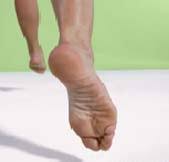


What are hammertoes?
Take a look at the toes on your feet. You will notice that your big toe only has 1 joint (1 place it can bend) while your 4 smaller toes have 2 joints (2 places they can bend). Hammertoes affect the toes with multiple joints – it is a condition where your little toes acquire a curl at the first joint which then forces the tip of your toe downward. The resulting toe looks like a hammer or hook.
What do hammertoes look like?
As mentioned before, hammertoes are the curling of the toes. In the above pictures, you can see the toes of these women do not lie parallel to the ground. However, these are feet belong to famous women! Try to identify these famous stars’ feet! The answers can be found at the end of this series (along with the full length photo of their couture)! Yes, even
What leads to hammertoe formation?
- High-heels
- Tight shoes
- Ill-fitting shoes
- Trauma
- Bunions
- Arthritis
Tight, ill-fitting and/or elevated shoe wear can force your middle toes to experience an overload of pressure which will then cause them to contract unnaturally. The crowding of your toes into a shoe may force your toe into the prolonged cramped position that ends up into a hammertoe condition.
A bunion is a foot deformity that involves the formation of a crooked bump on one side of the big toe. This bump is caused by the big toe moving towards your smaller toes. Overtime, the big toe will either overlap or underlay your smaller toes or crowd them and push them out position.
Hammertoes need to be evaluated because if your toes stay in their bent positions for extended periods of time, the tendons that function at those joints will become stiff (because they do not experience the full amount of stretching) causing permanent contractures. In other words, hammertoes will be evident even when walking barefoot!
What are the symptoms of hammertoes?
- Hook-like, curled toes
- Corns or calluses (thickened patches of skin created in response to friction against a surface)
- Discomfort or pain at the toes, at the ball of foot or in front of leg (when toes experience a downward stretch)
Hammertoes Affect Even the Rich and Famous!
Part 2
The passion for fashion is what leads to some very interesting foot conditions. No woman is immune to the deformities that can be caused by high heels or ill-fitting shoes – like hammertoes, for instance.
How can hammertoe formation be prevented?
Hammertoes can be avoided by following the toe-friendly recommendations listed below.
- Elect to wear shoes that are one-half inch longer than your longest toe – this allows for wiggle room for your toes
- Choose footwear with wide or box-like fronts – shoes that come to a point have very little room for your toes and may lead to deforming conditions
- Try to avoid high-heeled shoes – these types of shoe force your toes forward into the shoes where they will become cramped
Hammertoes will become permanent if you do not make the effort to take care of your toes!
How can hammertoes be treated?
Therapy for hammertoes requires stretching the toes in order to keep the tendons of the toes flexible and preventing the reoccurrence of the deforming condition.
Foot soak and stretches
- The heat from a warm water bathing of your toes will allow your toes to relax and the stretching of your toes toward the sole of your foot will keep your tendons supple
Exercises
- Simple exercises can be done to prevent tendon tightness – one such way is to place a wash cloth or small towel onto the floor and then grasp it using only your toes
- A podiatrist may recommend a proper set of toe and foot exercises to keep your toes lithe
Splints
- A store-bought or homemade splint will keep your toe straight and extend the tendons of your toes
Surgery
- A podiatrist may perform a surgical procedure on hammertoes that have reached a permanent state of contracture
Arthrodesis – this surgical technique is an option for the enduring hammertoe cases, it entails the fusion of a joint in order to flatten the toe
Arthroplasty – this hammertoe straightening procedure involves the removal of a small portion of bone from the affected joint which cause the toe to become straight
It is very important to consult your podiatrist before undertaking any course of action. Their medical expertise will help you solve your foot problems!
Central Florida Foot & Ankle Center, LLC
101 6th Street N.W.
Winter Haven, FL 33881
Phone: 863-299-4551
http://www.FLFootandAnkle.com








